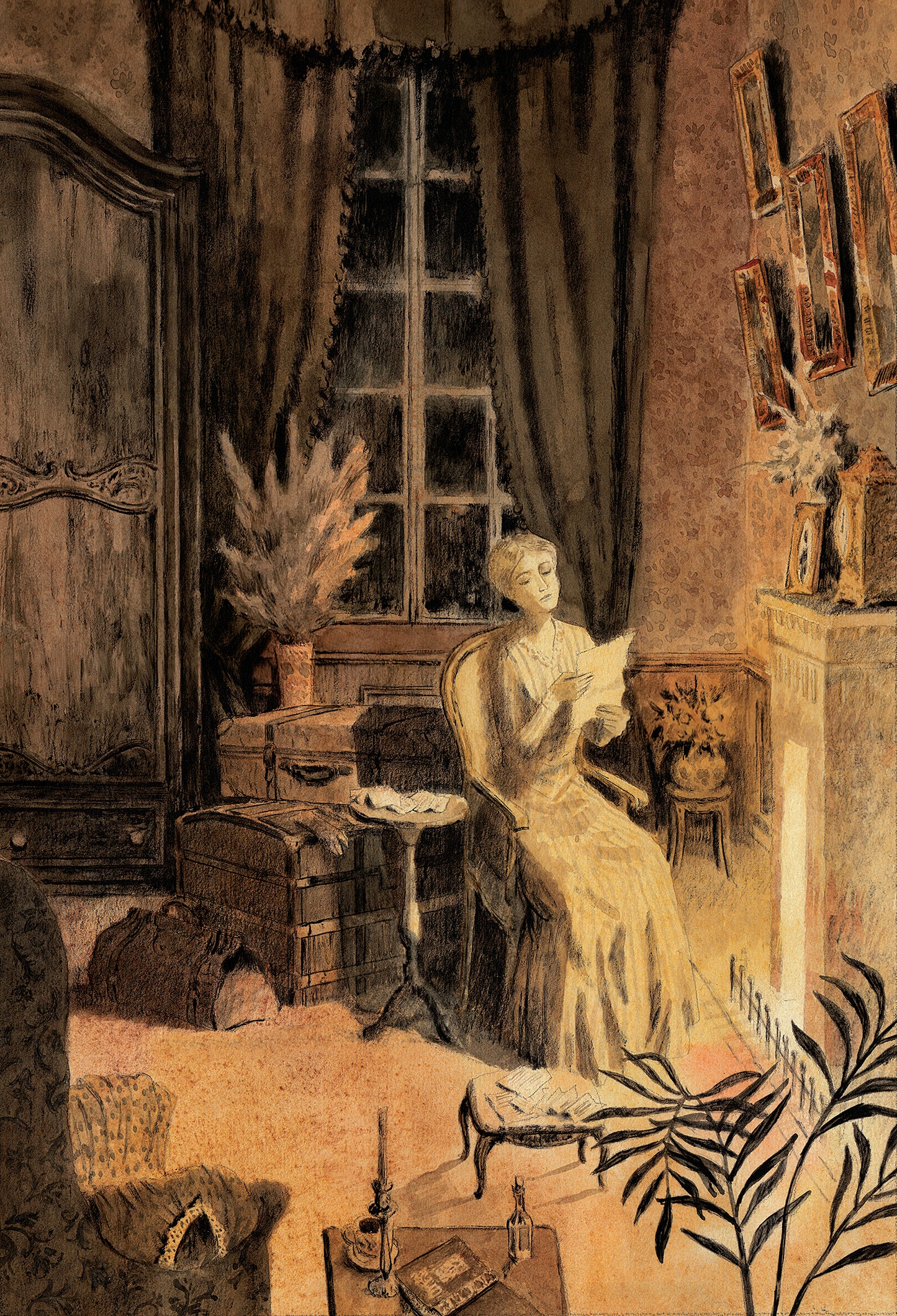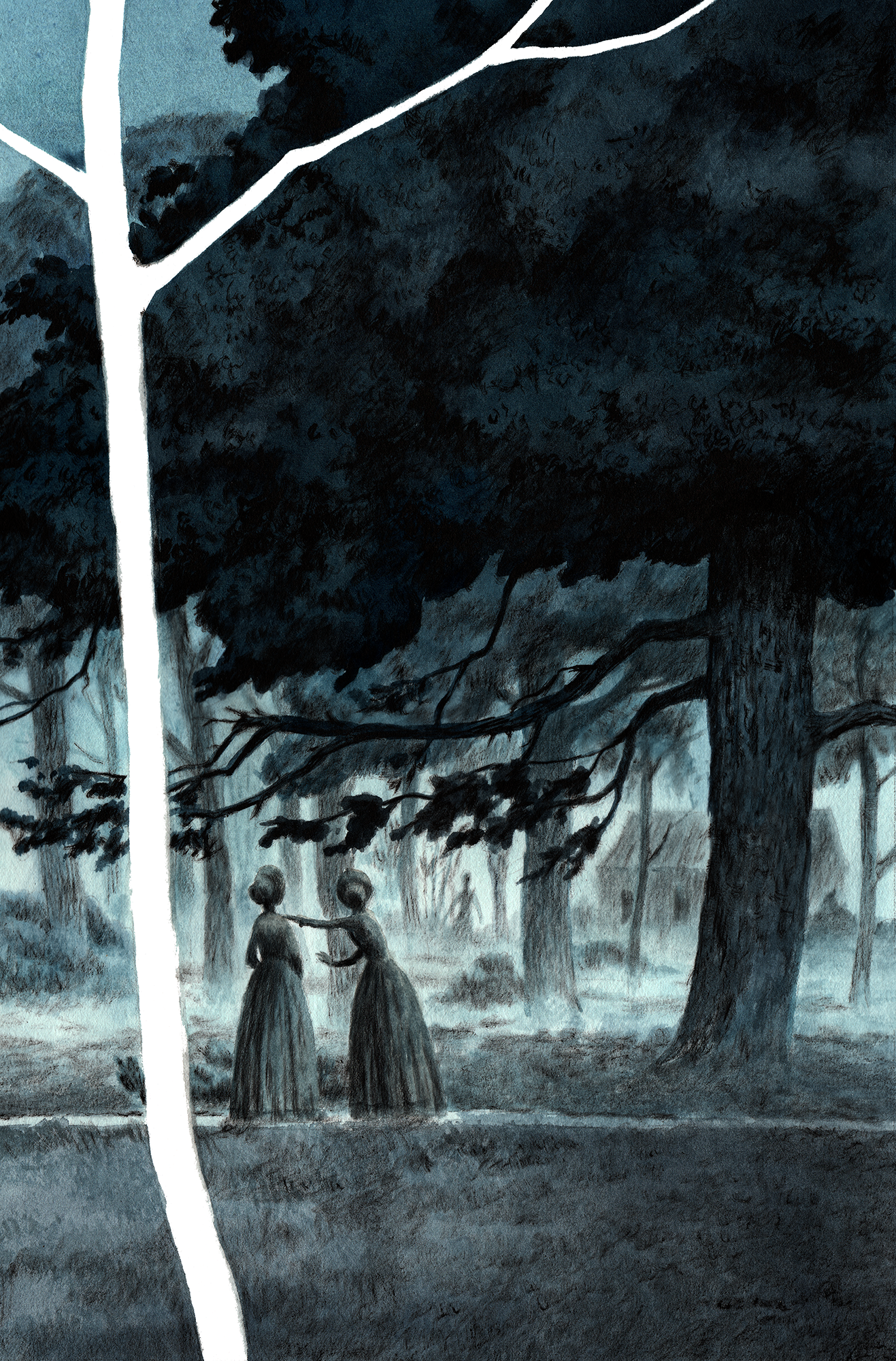The Woman in White
A novel
Rephrasing a writer in The Spectator at the end of 1861, The Woman in White epitomises a new variety of the sensation novel—one distinguished by a cleverly constructed, intricate plot whose appeal lies in the gradual unravelling of a carefully prepared enigma. Collins masterfully blends classic sensation themes—mystery, crime, secrets, duplicity, and identity—with romance and gothic elements, crafting a tale that balances a twist-laden plot with vividly drawn characters. As a trained lawyer, Collins also weaves detective and legal aspects into the novel, presenting the narratives as they could have been given by witnesses in a court of law.
The Woman in White opens with a chance encounter on a moonlit road: a distressed woman, dressed entirely in white, emerges from the shadows and implores a young drawing teacher, Walter Hartright, for his help in escaping her pursuers. This extraordinary meeting sets off a chain of events that draws him into the lives of two sisters—one of whom bears an uncanny resemblance to the mysterious woman. As the story unfolds, a complex web of secrets and deceit emerges, involving a substantial family inheritance, a ruthless Italian aristocrat, and a devilish scheme that endangers those Walter has come to care for.
Often regarded as the first great mystery novel, The Woman in White has inspired numerous adaptations across stage and screen. The author himself considered this work his finest, even requesting to be identified as "Author of The Woman in White" on his tombstone.

Wilkie Collins
The Woman in White












PRODUCTION DETAILS
- Matching design with our edition of The Moonstone
- Smyth-sewn, hardcover binding
- Covered in buckram, blocked with a design by the artist
- Set in Garamond Premier Pro
- 660 pages
- Printed offset on premium acid-free age-resistant cream-coloured paper
- Trim size 165 × 245 mm (6½" × 9⅝")
- Printed endpapers (b&w)
- Head/tail-bands and silk ribbon
- Frontispiece (b&w)
- Twenty watercolour illustrations
- Twelve b&w chapter openings
- Paper-covered slipcase
Featured illustrations (5 of 20)

About Wilkie Collins
Wilkie Collins (1824-1889) was a distinguished British novelist and playwright, recognized for his remarkable contributions to the world of Victorian literature. Although often overshadowed by his contemporaries like Charles Dickens, Collins left an indelible mark on the literary landscape.
Collins's novels, The Moonstone and The Woman in White, exemplify his mastery in crafting gripping and intricate narratives. The Moonstone is considered one of the earliest detective novels, showcasing his pioneering storytelling and clever use of multiple narrators. The Woman in White, a sensation novel, weaves together mystery, suspense, and psychological depth, making it a classic of its time. Beyond his mastery of suspense, Collins delved into social and moral issues, leaving a profound impact on the literature of his era. His works continue to be appreciated for their enduring relevance, and Wilkie Collins remains a celebrated figure in the canon of Victorian literature.

About Oleg Pakhomov
Sought-after Russian illustrator Oleg Pakhomov was born in Sergiyev Posad, a small quaint town near Moscow. He graduated from the Russian College of Toy Design in Sergiyev Posad, majoring in design. Started his career as a magazine illustrator.
Oleg has collaborated with leading Moscow publishers to illustrate a wide range of literature works, spanning from adventure novels such as Captain Blood: His Odyssey, The War of the Worlds and The Adventures of Sherlock Holmes to short stories by Jack London, novels by Jules Verne, and children's folk tales. Additionally, he illustrated some popular science publications for children.

The cover
Matching The Moonstone, the cover design for The Woman in White spans across the front, spine, and back boards to create a continuous illustration.
In this scene, one of the protagonists—the drawing master Walter Hartright—hides inside a church porch to observe the mysterious woman in white as she kneels beside the white marble grave of her late friend and teacher, Mrs. Fairlie.

The endpaper illustration
The endpaper features an illustration of Blackwater Park, viewed from behind a closed wrought iron front gate. Beyond the gate lies a gloomy courtyard, surrounded by the peculiar, mismatched structure of the house, which looms ominously over the scene. This black-and-white illustration exudes the melancholic and unsettling atmosphere, alluding to the dramatic events that unravel within the manor walls.





